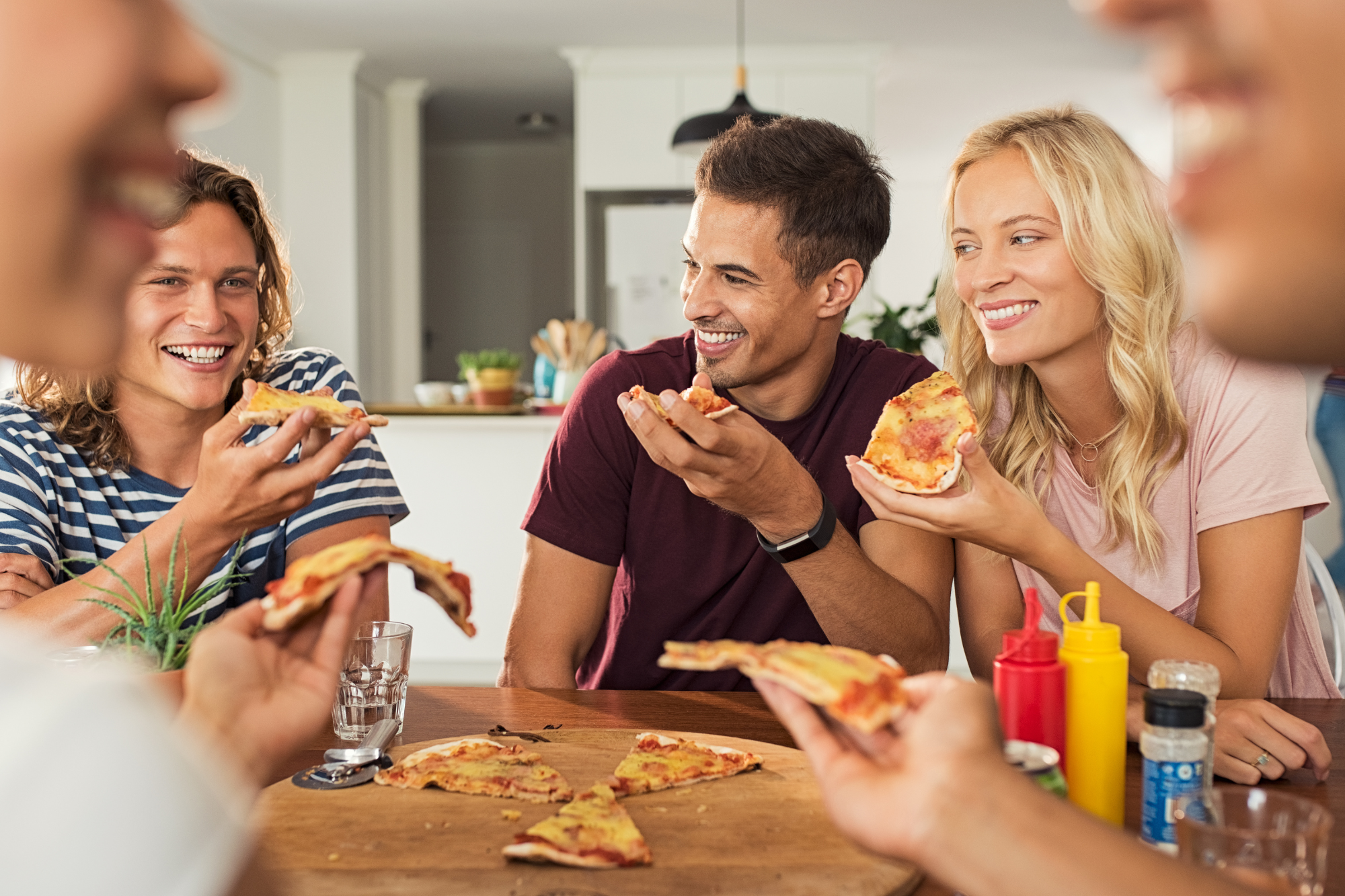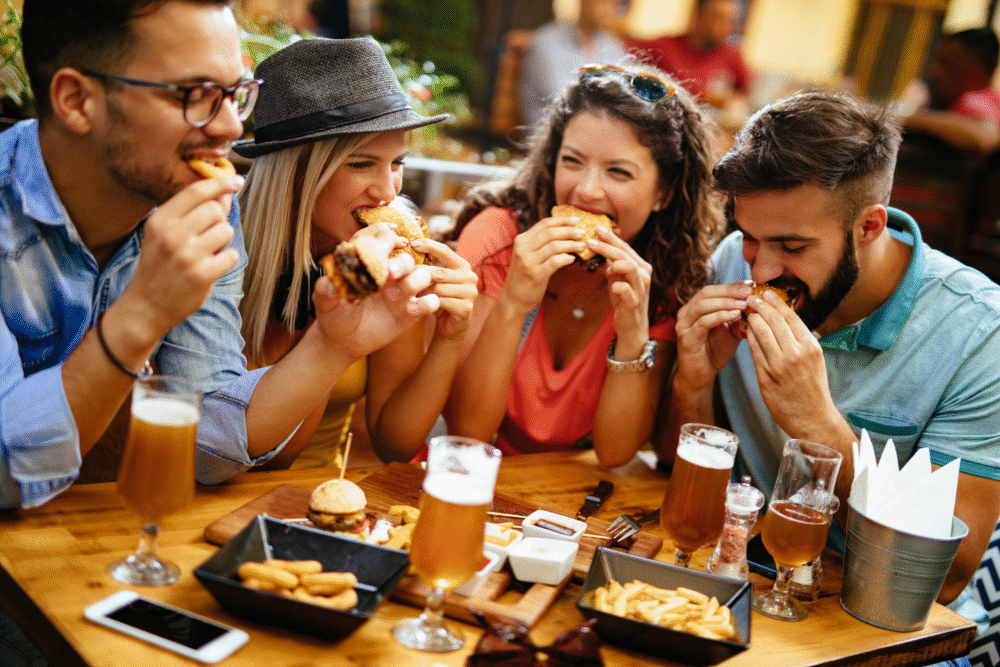Health class didn’t warn them about this part of adulthood.

The sudden surge in obesity among Gen Z isn’t just about fast food or skipping gym class. It’s a complicated cocktail of stress, economy, tech, and culture that’s quietly reshaping an entire generation’s health trajectory. They’re not simply making poor choices—many of them feel like they have no good choices to begin with.
Behind the TikToks and plant-based snacks, there’s a deeper, less glamorous story about what it means to grow up in an era of screens, burnout, and unrelenting pressure. Here’s what’s really fueling the spike in Gen Z obesity—and why it’s not just about willpower.
1. Ultra-processed foods are literally everywhere.

It’s hard to eat clean when nearly everything in your kitchen comes with 14 ingredients you can’t pronounce. Gen Z has grown up surrounded by cheap, hyper-palatable, ultra-processed foods that are scientifically engineered to override hunger cues. Most of them don’t remember a time before snack packs were standard or before sugar crept into everything from tomato sauce to salad dressing. And when you’re short on time, broke, or just exhausted, grabbing the nearest thing is more survival than laziness. Real food is expensive. Cooking takes time. And processed junk? It’s convenient, addictive, and everywhere—especially in low-income communities where options are limited.
2. Chronic stress messes with hunger signals.

Stress doesn’t just live in your head—it shows up in your stomach too. For Gen Z, anxiety and depression aren’t occasional hurdles, they’re baseline conditions. Between student loans, job instability, climate dread, and the pressure to always be “on,” their stress levels are sky-high. Cortisol, the body’s main stress hormone, increases cravings for sugary, fatty comfort foods while simultaneously making it harder to burn fat. Combine that with irregular sleep and non-stop doomscrolling, and the body gets locked in a cycle of panic and poor digestion. It’s not about emotional eating—it’s physiological overload.
3. Pandemic habits haven’t worn off.

COVID hit during formative years for much of Gen Z, and the aftershocks still linger. Remote learning disrupted school routines, gym class vanished, and comfort eating became a coping mechanism during long stretches of isolation. Even now, many still carry those lockdown behaviors—ordering in instead of cooking, snacking mindlessly during virtual meetings, and struggling to re-establish a normal sleep and movement rhythm. The pandemic didn’t just pause their lives—it rewired how they interact with food, activity, and emotional regulation. And no one handed them a manual for how to undo it.
4. Screens have stolen their movement.

When your social life, career, and hobbies all fit inside a screen, moving your body starts to feel optional. Gen Z doesn’t just use tech—they live inside it. Hours spent scrolling through TikTok, attending Zoom classes, or working remotely means fewer reasons to get up and move around. Even socializing is digital now. What used to require walking, commuting, or physically showing up now happens via apps. Daily steps have plummeted, and passive screen time has skyrocketed. Exercise becomes something you schedule in—if you even remember how—and incidental movement is practically extinct.
5. Sleep cycles are totally wrecked.

Late-night scrolling isn’t just a bad habit—it’s metabolic sabotage. Poor sleep throws off hunger hormones, messes with insulin sensitivity, and increases the likelihood of overeating the next day. Gen Z has some of the worst sleep hygiene of any generation, thanks to inconsistent schedules, blue light exposure, and constant notifications. It’s common for them to fall asleep with a phone in hand and wake up unrested, then reach for caffeine and sugar to function. Over time, this builds up into a loop of fatigue and poor nutritional decisions that the body can’t keep up with.
6. Exercise culture has become intimidating.

Fitness used to be about moving your body. Now it often feels like performance art. Gen Z grew up watching perfectly curated fitness influencers and gym bros who treat working out like a full-time aesthetic hustle. It’s easy to feel like there’s no point in even starting if you’re not training for a six-pack. That kind of pressure turns exercise into something punishing instead of empowering. Many Gen Zers avoid gyms entirely because they feel judged or underqualified. Instead of walking or lifting for health, movement gets skipped altogether unless it can be turned into content.
7. Diet culture backlash has created confusion.

The rebellion against toxic diet culture was overdue—but it’s also left a nutritional vacuum. Gen Z is more body-positive than past generations, but that doesn’t mean they’ve figured out how to eat in a way that’s healthy and sustainable. Rejecting calorie counting and food shame is empowering, but it’s also created confusion about what balanced eating even looks like. With every influencer pushing a different wellness trend, nutritional advice feels like noise. Many opt to disengage altogether, unsure of what to trust. The result? A generation stuck between self-love and self-neglect, trying to find footing in the chaos.
8. Mental health care is still out of reach.

Therapy might be trendy on social media, but for most Gen Zers, it’s still expensive, inaccessible, or just not taken seriously by the adults around them. Mental health struggles like anxiety, depression, and trauma often get channeled into eating patterns—bingeing, restricting, mindless snacking—not out of vanity but because food feels like control in a world that doesn’t make sense. Without emotional support or coping strategies, those habits harden into routines. When therapy is out of reach, food becomes medicine. It’s not the healthiest option, but it’s the one that’s always available and socially acceptable.
